It started back in 2003. Christine Schilling was one of the many hopefuls working at TOKYOPOP as an intern when she got help on some things from current letterer James Dashiell.
They didn’t exactly hit it off immediately.
“We did meet again,” James mentioned as he explained how he and Christine saw each other at Go! Comi, the publishing imprint that published manga from 2005-2009. This time Christine was brought on as a translator.
And well, this time they actually got to know each other. And after working together, and then soon dating, they then got married in 2009.
And they are currently lettering and translating your manga today.
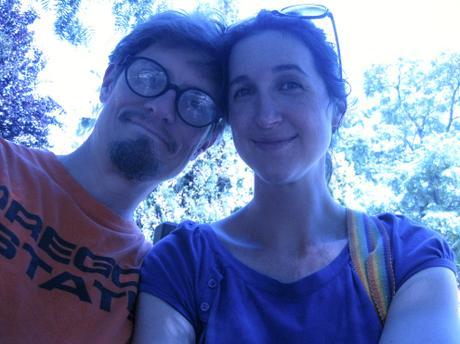
Apparently at Go! Comi and TOKYOPOP, the no-office romance policy didn’t exist. But while dates occurred at those places, James remarked, “I also like to think we (him and Christine) had a special kind of love.”
It hasn’t seemed to affect them when it comes to work…in fact, it may just be a bit easier that way. “I think it makes it easier,” said James. “It’s definitely a little bit more fun because sometimes there’s some crosstalk, Chrissy will talk to me about something and I’ll be able to get some input and usually as a letterer, if the script is done, the script is done, and it’s my job to make it be good, but there’s not a whole lot of crosstalk between letterers and translators usually. So with Christine sometimes I’ll say, ‘Oh can you make this shorter to fit into a bubble or can you reword that,'” But, as he continued, they both get more invested in what they’re working on together as opposed to working on separate series. As Christine put it:
“We can go back and forth with any questions or uncertainties we have, but also it’s like following a series via TV or whatnot with a friend and/or family and you can just bounce ideas off each other and wonder what’s going to happen next or what you thought about that certain development that happened so it’s very enjoyable.”
Needless to say, this interview took some turns, but expect a lot of surprises. I interviewed James and Christine Dashiell, who are currently in Spain, and they explain how they got into manga, the story of what they did to the TOKYOPOP manga you read from 2004-2007, lettering and translating advice, why Christine gets stuck on T&A work, and James explains how he’s not reading manga for pleasure (unlike his wife who’s reading a chapter book edition of Naruto to her daughter).
Organization ASG: How did you both get into manga?
Christine Dashiell: You can go first, James, my love.
James Dashiell: Sure. I always liked comics growing up as a kid, and also as a kid I used to watch some of the earlier anime like Star Blazers and Battle of The Planets, super old school stuff. They would show it on the TV and me and my brother used to watch, so I always kind of knew that there was some really cool stuff coming out of Japan and then when I was older, I would read some of the really early Eclipse manga translations, like Area 88, Appleseed, and some of those other super early manga translations that they would do in the early 90’s. Some of them were really well done and some were not, but I enjoyed the style of manga a lot. Later on in the late 90’s, I started reading Tezuka and other things, and they were very inspirational books, these books that Tezuka would make, they were very special. And I think that’s what kind of cemented manga with me, as being something that I love.
Christine: Myself, I’m a touch younger than James and I wasn’t watching those things on TV, it was actually Sailor Moon when was airing in the late 90’s, I think 1998 when I started watching it on Toonami. So that was the gateway anime for me as I call it, and thanks to the internet I could pursue all the following seasons that they never got to show in the U.S., and I would always stumble upon…I would think in my head, “Manja”, like I did not know anime or Japanese–
OASG: “Manja”? *laughs*
Christine: Dude, this is before I knew all the proper pronunciations, I was like, “What is this grotesque interpretation of this beautiful anime I love so much?” So I was actually a little prejudiced against manga for its very different style, especially if you’re familiar with Naoko Takeuchi’s style, it was too much for me. But, I understood that Sailor Moon was not something from the States and when I realized, “Oh, this is from Japan, what does it originally sound like?” I kind of didn’t trust the translation already in the dubbed version, I wanted to get to the root of it so that was really why I pursued Japanese language in the first place, getting a tutor and going to college and majoring in it and…yeah, of course the manga opened my eyes to how beautiful the manga can be in different contexts, you have different artists and also is a good learning tool. So kind of like my job in general, I have to know Japanese to translate, but I’m also always learning on the job too, which is very much fun.
OASG: Did you both ever expect you’d be working in the manga industry?
Christine: Working in the manga industry? When I was in college pursuing Japanese, a local comic book store in my college town scoffed when I said I would like to maybe get into it and become a translator or something, so when I did break into it as a freelancer, I came back to let him know and said, “Thank you sir for trying to shoot down a young women’s dreams!”
But I consider myself very lucky and I wonder if you ever, James, what your history with that?
James: Oh no, I don’t think I ever expected myself to be working on manga before I got into it. It was one of those things where I was living in Los Angeles and working and I started doing some freelance work for TOKYOPOP and I thought it was really interesting to be able to work on this stuff, and it’s really inspirational for me, as somebody who likes graphic arts because it’s all very well done. So yeah, I just started working on it and from then on it was just a fun thing to work on and I’ve enjoyed being a professional in the manga industry for a long time. It’s been great.
OASG: What do you think has changed since you both started?
James: I think delivery. I think mostly now it’s digital delivery. Obviously people still like to buy books but I think the numbers have gone down significantly, the sales numbers of manga, I think that would be the #1 change.
Christine: Absolutely, I think the 3 main clients that I have, digital release is their main avenue these days so that’s interesting to me. Also I feel like when I was first getting into it, it was declining. I think the bubble had popped for manga, TOKYOPOP especially flooding the market and whatnot and it was dwindling, dwindling; now I feel like the momentum’s picking up. I still feel that publishers are more picky with their titles, at least the ones that are coming my way. You know, like Akame ga Kill!, when it has an anime associated with it you know it makes it a much more successful title, and so I feel like it’s getting better.
OASG: Has it been a big adjustment? You’ve been working with physical material for a good while, and now all of a sudden it’s just coming in digitally?
James: I think personally from my standpoint the workflow is better. You know you can run into a lot of problems when reproducing manga, the quality can vary sometimes based upon the different ways you want to reproduce the material. Sometimes we would work with publishers that get digital files, and then sometimes they wouldn’t have digital files available, or they would be prohibitively expensive for some publishers to get, so they would get physical copies. I know back in the day with TOKYOPOP, literally we would get tankoubon from Japan, and heat it in a microwave–
Christine: *laughs*
James: –So we could take the book apart and scan it, like the printed book from Japan, and like obviously the paper’s not super high quality so there’s gonna be some saturation of ink on the pages and we would have to reproduce it again and that makes it even worse. But the digital assets, usually we get great digital assets from the publishers in Japan, which is great, the quality’s really high, and it’s a lot easier to produce a localized manga when you have all those things in disposal. And I guess some of the industry has been condensed a little bit? It seems like a lot of the big digital publishers are sister companies from larger companies in Japan and that makes the workflow also a little bit easier. With Seven Deadly Sins we simultaneously publish chapters digitally with the Japanese folks so that’s something that would have been very hard to do.
Christine: Yeah, definitely the difference I’ve say working off physical and more onto digital is the turnaround, the pace is a lot quicker, which I don’t mind so much, and because it’s all on my computer, I pull up these files located on my computer and put it on an FTP or emailed me or what have you, and I don’t have to have a desk — a literal desktop that I can place my computer and then my little books sitting in its book holder, no none of that. It’s just right there, half my screen is the image, half my screen is my script, the text document, and I really like it, it’s more freeing.
OASG: Um, James, can you share some manga you had to heat up in the microwave *laughs*?
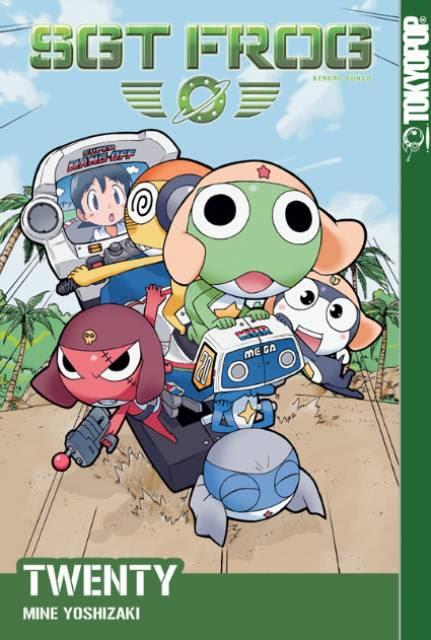
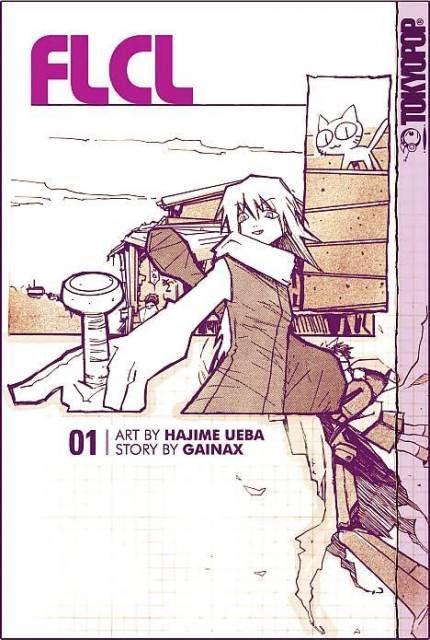
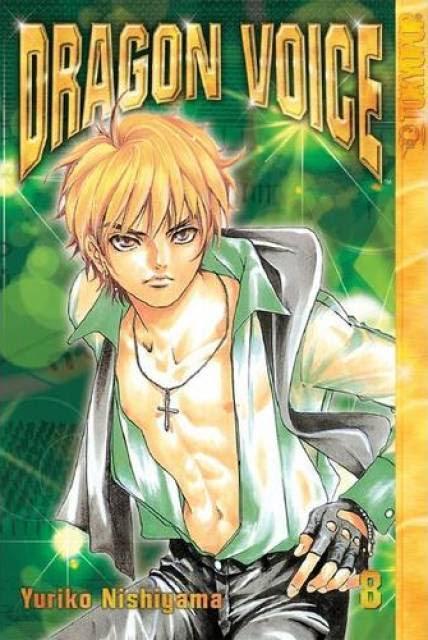
James: Totally man, we did so many I mean…any title from TOKYOPOP in 2004-2007 I think they were doing it.
Christine: I guess it would be the older titles.
James: The older titles, definitely–
Christine: Dragon Voice—
James: All the Sgt. Frog books–*both Christine and James laugh* all the Love Hina novels, all the uh…what were some of the big ones we used to do…uh FLCL—
Christine: Awwwwwww! Microwaving all these books! *laughs*
James: Yeah, we would microwave it for like, 40 seconds or whatever, and the glue along the spines would just heat up and become more pliable and that way we would peel the pages right off! And we would have these large scanners that they would be able to put like 4 pages up on it and scan those. And then every once in a while at TOKYOPOP we would get digital assets.
But even then I’ll tell you a lot of text, like thoughts, overlay text on backgrounds, we would have to clean that stuff out. But nowadays that’s really rare, like, thank god a lot of the overlay text has just disappeared.
Christine: And on the translation side, when it’s digital you can zoom in with this great, crisp, asset as opposed to this blurry scan or what have you, or if it’s a book we have to peer super duper close to try to figure out what these tiny characters might be. That is irrelevant when it’s all digital, which I like.
OASG: You both worked with TOKYOPOP. How was it like?
James: It was good. TOKYOPOP was an interesting company, I think they were in the right place at the right time in the late 90’s-early 2000’s, they acquired a lot of licenses that were good for them. I quit working at TOKYOPOP in late 2005 and I think by that time they had seen dwindling sales. I think scanlation was really beginning to take a little bit from their market, but as Chrissy alluded to earlier, they had a lot of licenses that I don’t think were quite as appealing, but they were using similar bandwidth to promote and create buzz around them. So it was interesting, I think there were a lot of really good ideas at TOKYOPOP and a lot of really good creative energy going on there, but their thing was, what they wanted in the end was to create brands and IP of their own, and that never really caught on as much as it wanted it to. But I think it was a big part of what they wanted to do, to create new series that appealed to readers of manga.
Christine: Myself, I worked for them as a freelancer so I didn’t have the in-office experience besides when I first approached them in 2003 as an intern, which I did twice in the winter and summer term, and fortunately it was a really strong group. Even after the company all but dissolved, I’m still in touch with a lot of the people, and we have some very close friends that we see regularly and they really had a special thing going. I guess any office that deals with such creative youth oriented content is just going to be a really fun place to go around in and…see little gachapon figures at everyone’s desk, etc.
Didn’t they have like regular Friday frisbee tournament stuff?
James: Oh yeah, Rob Tokar would do that. That was a lot of fun.
There was some good people at TOKYOPOP, it was a great place to work, and again, when I first started working there, it was late 2003, they were really excited about the possibility of the other things that they were doing there. Some of them panned out, some of them didn’t, but overall I think it was an interesting place to be at.
Christine: Yeah, and I feel the people that they were proud because I always sort of attribute that TOKYOPOP single-handedly is responsible for the popularization of manga when they decided to keep it to the right to left, they wouldn’t flip all the images and really just kind of opening America’s eyes to all these different kind of manga. I know there was Urusei Yatsura stuff, who had put that out, was it Dark Horse?
James: It was Dark Horse…or early Viz, early Viz.
Christine: Yeah, early Viz. So, anyways, bravo to them.
OASG: Ok, for Christine: What would you say has challenged you when it comes to translating a manga series?
Christine: I guess a couple different things. One that comes to mind right now is how manga, unlike other forms of literature, there’s so much pop culture reference because language is such a living thing and especially when it’s in these manga that are, you know, the audience is these young people, the teenagers or whatnot who, through different technologies or just things going on in the entertainment world will come up with new phrases and allusions to things just…my goodness! With the internet especially, certain manga I’ve noticed really have a lot of these really cutting edge, new references to funny things that happened online, so it’s really challenged my ability to surf the web as though I’m a Japanese kid trying to find the root of a meme, you know what I mean? Like “dog”, D-O-G, I’m like what is all that about, I’m trying to find other equivalents in Japanese pop culture, youth culture, and so that’s a challenge. And sometimes I think to myself, “Wow, knowing Japanese is obviously important in a job like this, but knowing English is also so insanely important!” because you can fall into these bad habits of literally translating things that sound so awfully awkward in English or I might know a phrase or concept in the Japanese language very well, but then sort of be stumped as to how I’m supposed to express that in English.
And that’s when Dash comes along, because he, I mean I love to read too but I consider him very well read and I’ll often come to him and ask him a question and try to explain the situation, so “like if Character A is saying to Character B that she feels this way, how do you describe that in English exactly?” He is really good at coming up with good idioms and what not.
So those are two challenges, it really makes me have to look at my own language a lot more thoroughly and I can kind of get into a rut too where I’m reading so much manga for work or for pleasure that I really have to step out and read more English literature to really get my language where it should be *laughs*.
OASG: Now for you James, what challenges you when lettering a manga?
James: Well I think one of the things that can be a challenge is formatting. Sometimes you get manga that is really wordy and there’s just certain styles of manga, like shoujo manga especially, where it just gets really, really dense in the amount of interactions that go on and even in one panel or one page. Somebody will say something and it will be an aside, and it’ll be a side doing an aside and then there’ll be some little cartoon conversation with super chibi characters and they’re talking about what the person’s saying…sometimes when you’re doing books like that, it can be exhausting. That’s one of the biggest challenges.
Christine: The really chatty pages.
James: Yeah, really chatty and then also, one of the bigger challenges is something that I enjoy doing, but signage, or places that are significant that have type in them in some way shape or form or some object that somebody gets. I know in one of the series that I’m working on, UQ Holder, there’s a lot of references to smart phone applications but they’re like, magic that you acquire. So when they use this magic, it’s not just like dialogue, there’s some type of an interface that pops up that you have to translate and you have to match the formatting very closely and re-touch everything out, or you know, sometimes they’ll be situations where there’s a lot of handwritten text and panels. Like I did this one book a couple of months ago where there was a lot of graffiti kind of scrawled on student’s desks and classrooms and stuff like that. And sometimes you can’t do that response, you have to do that with your own skills to make it look authentic. And those can be challenges, depending on the type of deadlines are and whatnot.
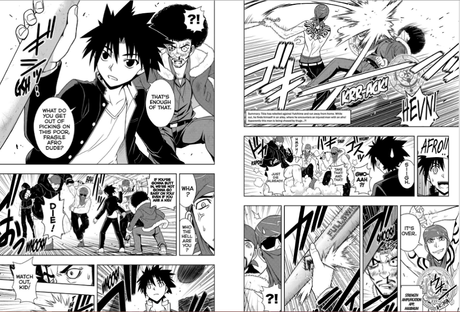
Christine: If I can interject, as a translator too, kind of going back to the change when working on a physical format as opposed to digital, when I receive the physical book I’m allowed to mark it with a red pen each element on the page via a text dialog or a thought or sound effect, so it’s really clear, so when the letterer gets that they know, “Ok, element 1 is here, boom, I’ll just change it,” but when it’s just digital you can’t really start marking the pages as easily, at least one of my clients ask for it, I have to be extra conscientious in such busy panels as my husband described, so I’ll say, “John says this but then John, aside, by his ear, is saying this, but then Mary, down over by her chin, is saying this,” and you know, I have to take a lot more time to describe exactly which element I’m talking about. So that’s also a challenge.
OASG: Has it been a challenge working with all these different companies in the manga industry?
Christine: Sometimes yeah. They have different rules about formatting, how the script should go, different rules about the grammar point, be it an exclamation point, a question mark, should it be that way, or is it flipped around for different companies, so, especially when I’m doing back to back deadlines for two different companies, I have to stop and think, “Ok wait, I’m dealing with so and so and I know they like their stuff done this way” and so yeah, you kind of have to keep ’em straight. They haven’t all decided that one way is the best. For example you may have noticed that Yen Press books, the way that they do their sound effects is in the gutters, so you write, “The onomatopoedia–”
James: Subtitle.
Christine: Yeah. The representation of the sound effect, “Don” for example and then I have to put in parenthesis, (Don), but for Viz I can just say “Um, you know” and just move on from there. And yourself, Dash?
James: That’s one of the only things, that Christine alluded to, is every publisher seems to have their own signature way of doing certain things. Sound effects is pretty much the big one and sometimes you do accustomed to working with one style but then you move to another style and then you sort of have to knock the rust off, get back into this other way of doing things. That can be challenging, it’s nice to deal with the different publishers though. It keeps the job fresh in my opinion. There’s definitely publishers that like to acquire certain licenses and then there are other publishers that go with their sister company in Japan and whatever is out from them, but it’s always interesting to see what people think is gonna be a good thing to come out with and publish.
Christine: It’s kind of interesting. Along that line, so Yen Press, I felt like they kind of pigeonholing me with certain projects ’cause they had me go do Zombie-Loan by Peach-Pit and then soon after I was doing High School of The Dead. I swear there’s one more zombie apocalypse kind of one, I was like, “What, again?!? *laughs* What do you see in me that makes it seem like this is my niche?” But on the other side I do other things but it’s kind of funny that I can feel like, “Oh, I sorta being given the same kind of projects, maybe I have an air for it that I didn’t even know about it. I have a flair for it.” *laughs*
OASG: What would you say would be the best way to break into the manga industry in your respective fields?
James: Um…you want to go first?
Christine: Um…I feel like networking is huge, right? I really attribute getting in…ok, interning is really big you know? And maybe some people don’t like that idea because you’re working for free, but the benefits are so huge because you know these people, they know your face, and so they’ll automatically trust you more, we’re humans, we’re social creatures, and so even when TOKYOPOP went under and I wasn’t even there anymore I got called by Go! Comi from one of the people that worked there and was branching off to work for Go! Comi and remembered me and thought, “Hey we should hire her to be the translator.” So making good impressions, and also, I think I was even dreaming about this last night, conventions, that’s a great opportunity to see these people in these industries face to face, and you can really make an impression. I mean it’s fun, business and leisure all in one.
James: If you’re looking to get into the manga industry, doing lettering or layout or any type of production work, just make sure you have a good handle on the tools, Photoshop and InDesign, that’s the big tool most people use for laying out manga, and once you get that down, just make yourself as visible as you can. Try to do projects on your own to build up your skills and then you’ll have the portfolio that you can either cold call or cold email or get in touch with a publisher saying, “Hey, this is me, this is my name, here’s a web link,” and then like Chrissy said, go to conventions, if you see somebody that works for a publisher that you respect, don’t be shy, introduce yourself, that’s what they’re there for at conventions and trade shows, and like she said impressions mean a lot. If you can break eyes with somebody it might go far. And then also keep your ear to the ground. If there’s any listings and areas you want to work at in NYC, LA, SF, look on Craigslist, look around at websites that might have job openings. I know at TOKYOPOP that was how I saw them, they were on someplace and they were looking for people, and that’s how I got in with them, and sat down and had a really good interview with some of the people there, and that’s how I got started.
OASG: Ok, let’s talk about some manga you aren’t working on, but are reading. Has there been any manga you’ve been reading in the past year or so?
Christine: That WASN’T for work?
James: Yeah exactly! *both laugh*
Christine: I feel like I read so much for work these days, what’s the last one I did for pure pleasure? Oh I’ll tell you! I can’t say any particular titles, but man I’m really a big fan of the yaoi scene. So that is what I read for pleasure. *laughs*
James: Again, we have children…they’re kind of small…they take up a lot of our time–*both laugh* And I’m a gamer, so if I’m not working or hangin’ with my kids I’m probably playing a game, and because I do manga for work a lot of the time it just doesn’t really pop up on the radar as much as it used to. Sad, but true!
Christine: I did watch anime for pleasure and that was, geez, a year ago now, but it was Attack on Titan, thank you Netflix for having good anime.
OASG: Oh, so…you don’t have any manga that you would be able to read to your kids huh?
Christine: *laughs* Oh, you know what, I am actually reading–
James: Naruto! *laughs*
Christine: Naruto a bit, so even here in Spain, we’re in the Catalonia area and so they have it in Catalan, and I’m trying to expose it to my kids a bit, and in the states I was actually reading Viz’s chapter book version of Naruto, which is funny because my friend, his name is Alexi Kirsch, and he’s an editor at Viz, when I told him I was reading it to my daughter, he kind of laughed thinking, “Oh my goodness I have to tell the editor.” Because there’s certain products that sometimes the companies put out that the editor working on it might think, “My goodness, why are we doing this?” ’cause, I dunno, the point of the manga is the pictures, right? So when you take that away and make that into a chapter book you just wonder how well it would go over, and I would have to say my daughter loves it so I’d say it was worth it. Naruto…chapter version! Chapter book version! *laughs*
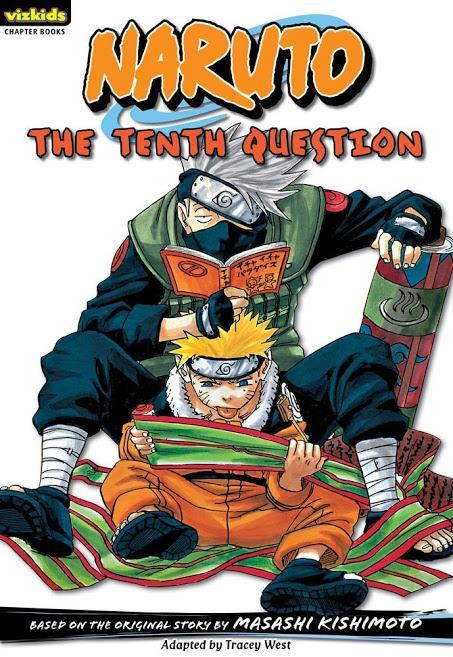
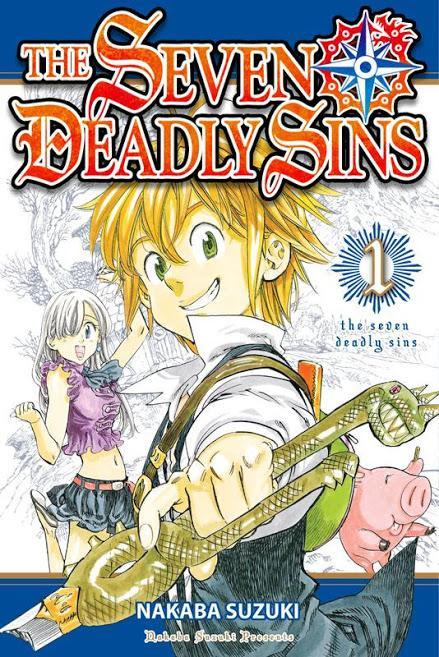
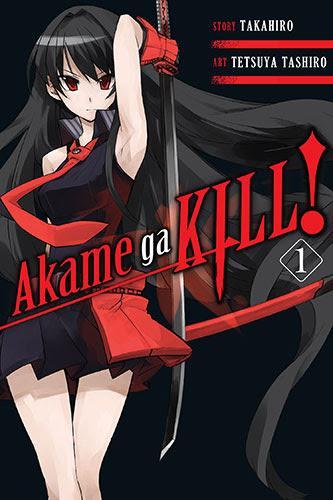
OASG: Christine, you had mentioned this earlier. You went from working on Peach-Pit’s zombie manga to being assigned on High School of The Dead. This makes me wonder…you’re also translating Triage X and So I Can’t Play H!…how do you do it? How do you work on those types of manga where it’s like frowned upon?
Christine: Oh, because it’s so T&A! *laughs* Yeah, I just work in the evening–
James: *laughs*
Christine: I left the book out in the living room and I forgot, I come in and my little daughter who wasn’t even 5 was looking through it and I was just like, “Oh man!” I dunno. Do I have her wait and have a good sense of positive body image *laughs* before reading something like that? Um, yeah, those are really, I dunno, they can really get…maybe they provide some kind of escapism for me? Maybe some kind of outlet I don’t know I need? But I really enjoy working on those…*laughs* they’re really just fun and I wonder about the people who will buy it and like…I just wonder–
OASG: Already judging them I see, ok! *laughs*
Christine: *laughs* Well I wonder, are they all guys? Maybe there’s some girls, some ladies that do enjoy it.
OASG: I do know some girls that do like High School of the Dead.
Christine: Good! I know, it’s so exciting, oh my god, like zombies are one of my all time kind of scariest, most thrilling monster creatures, like vampires, whatever, but man zombies…but yeah, I’m so sad that’s been put on hold for so long and yeah, hopefully the mangaka will get it together again and feel confident enough to continue the story.
OASG: What do you both have planned for the rest of the year?
James: Lots of ongoing series, hopefully there will be some new series coming up.
Christine: You know, what we work on which, I dunno if we’re well known for it because I don’t know how they do the credits on it, but Harlequin, it feels like Harlequin manga is kind of niche for sure, and so we’ve gotten assigned on some, as a tag-team duo, and I love working on that, I feel like it’s really good for our marriage because it’s these romance stories and we get to work together. I hope we get to work more on that I have to say. I may have to knock on some doors and say “Hey. You have a need for a translator and letterer team?” And continuing with the series that we’re doing, Akame ga Kill!, quite long–
James: Persona Q—
Christine: Seven Deadly Sins, it’s still going strong, and Toriko, I do the weekly release for that and just love it!
OASG: I was just going to mention with Harlequin that the only ones I know are publishing it is eManga (Digital Manga Publishing) or a site I found…I think it was last year, Balloons & Chapters, they’re like literally the only ones that are selling it.
Christine: Yeah! I also wonder, “Who is buying this stuff?” I mean I love it myself, but I just wonder…it’s just interesting to me, Harlequin has these older women and I don’t feel like older women are still an audience that reads a lot of manga in the States, maybe I’m totally incorrect and Harlequin is selling like hotcakes, but that’s right Balloons & Chapters, I found some of the ones I worked on there and I didn’t see my name anywhere on there on them, so I really don’t know how the crediting works, they’re all pretty anonymous I feel.
OASG: That’s kinda disappointing. I should call ’em out on that. *laughs*
Christine: Eh. I should just add them to my Anime News Network biography page *laughs* Do you have one on ANN, my love?
James: Yeah.
Christine: Mine’s a little outdated, I’m sure. *laughs*
OASG: Do you have any last advice for those who might be interested in lettering, translation, or both?
Christine: So, to translate, you need the Japanese language. Ok, so I was in upstate New York when I started to pursue it, which is as far as you can get from Japanese culture anything, so um, yeah, my mom found a tutor and starting with a tutor can be a good way to go! I mean you have to be so self-driven to get good enough at languages that you feel comfortable enough translating it and I’m very happy that on the side I tutor some children, some young people in Japanese, and one girl is really, very driven and she wants to maybe start with scanlation stuff to get some practice. I say no shame starting with scanlations, of course, being fair to the creators and publishers if they’re in the States, that it’s very good practice, even if it is also working for free. Like interning *laughs*
James: I would just say if you’re interested, get started. Get some access to tools, a nice working setup, and get with some like minded people online or going to conventions and stuff, and try and cook up some cool projects you know. Because experience is often the best teacher you know? And if you can get a tutor, and you’re interested in it, then you’ll have a leg up on a lot of people. But it’s really you get out of it what you put in to it. You have to be, like Chrissy was saying, driven, obviously Japanese is a huge hurdle but it’s really nice to have that understanding of the source material or just to be in there and it’s a lot of fun making manga, it’s just a fun thing, it’s a lot of fun to feel responsible for something that people love. It’s a lot of fun.
(Ed. Note on TOKYOPOP manga being heated in microwave conclusion:
“They had budgets,” James remarked. I then asked if they had used multiple microwaves and put manga in there.
“No man, it was the microwave in the break room.”
…I’ll leave you to draw your conclusions there…)

